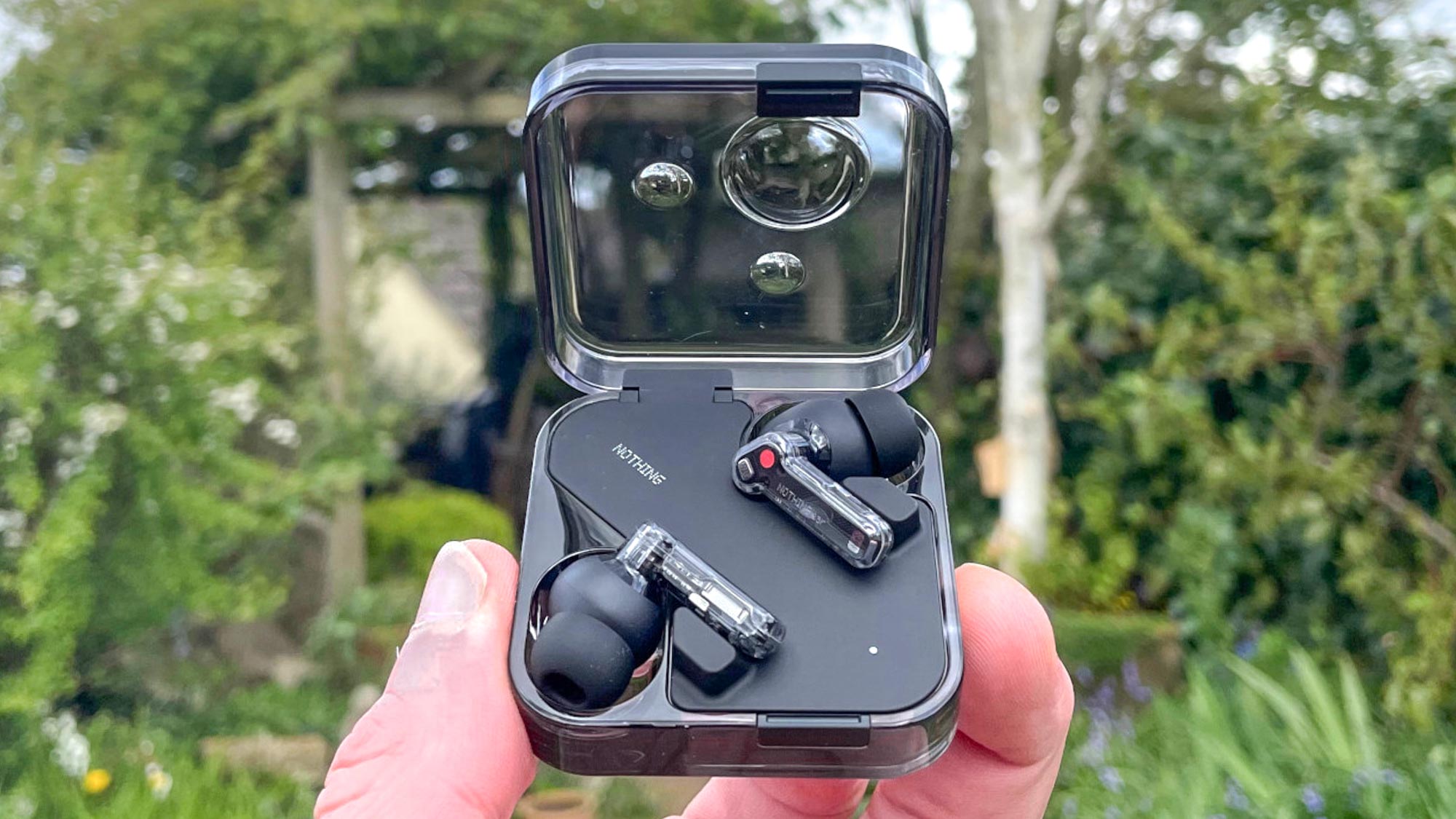
Price: $149 / £129 / AU$249
Colors: White/transparent; black transparent
Battery life (rated): 5.2 hours (ANC on), 24 hours ANC on with charging case), 8.5 hours (ANC off), 40.5 hours (ANC off with charging case)
Connectivity: Bluetooth 5.3 with SBC, AAC, LDAC, LHDC codec support
Durability: IP54 buds; IP55 charging case
Weight: 0.2 ounces (per bud), 2 ounces (charging case)
Nothing's Ear (2) noise-canceling earbuds are barely 12 months old, but the young British company is already on to its third generation of flagship ANC buds. As the follow-up to the Nothing Ear (2) and Ear (1), these next-gen buds join the recent Nothing Phone 2 and Nothing Phone 2a smartphone launches and are simply called Nothing Ear.
I confess, I found the non-sequential model naming a little confusing, especially when you consider that the company has also launched a pair of $99 Nothing Ear (a) noise-canceling earbuds simultaneously. Nevertheless, the Nothing Ear buds offer several tech advances to boost performance over their predecessors and achieve what the company describes as its best-ever audio experience.
Despite the significant tech boost with sound refinements and improved personalization, the Nothing Ear maintains the same MSRP as the Ear (2).
I've been testing Nothing's new flagship earbuds for a week and this is my full review. Read on to find out how the new Nothing flagship buds stack up.
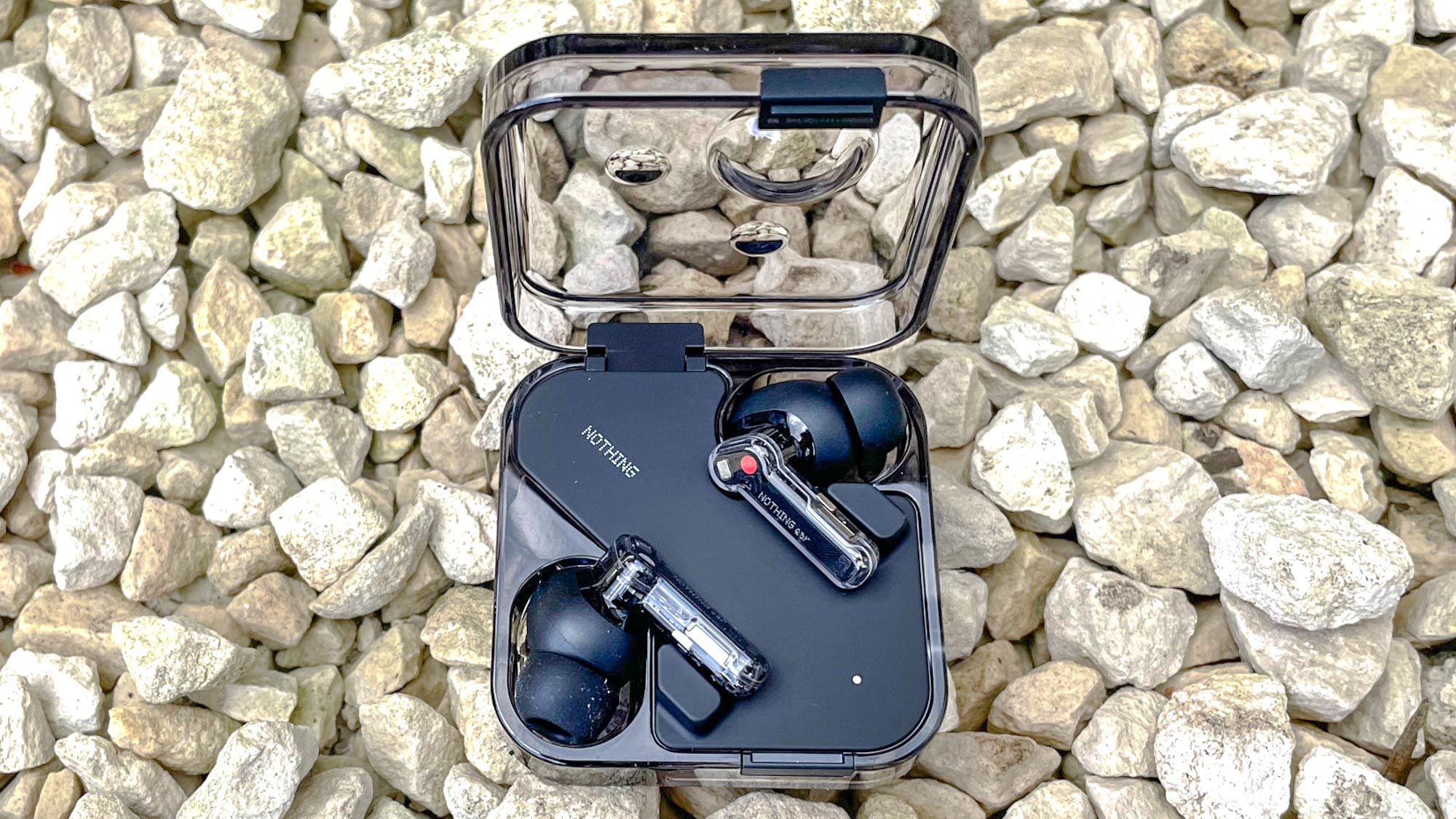
Nothing Ear review: Cheat sheet
- Custom 11mm dynamic driver with a ceramic diaphragm and improved airflow
- LHDC 5.0 and LDAC codec for high-quality streaming over Bluetooth
- Adaptive ANC, which automatically applies one of 3 noise cancelation levels
- Improved noise cancelation that's 1.8 times stronger than Ear (2)
- 25% longer battery life than Ear (2)
- Same price as the Nothing Ear (2)
Nothing Ear review: Specs compared
Nothing Ear review: Price and availability
- On sale priced at $149 / £129 / AU$249
- Available in black and white color options
The Nothing Ear are on sale now priced at $149 / £129 / €149 / AU$249 via the company's nothing.tech store. The price is the same as the company's Ear 2 that launched in 2023, which is $100 cheaper than Apple's AirPods Pro 2 USB-C flagship. Interestingly though, the new Nothing flagship is $50 more expensive than the recently introduced OnePlus Buds 3 flagship earbuds ($99).
The Nothing Ear are available in black or white color options. Both colorways have transparent drop stems.
Nothing Ear review: Design
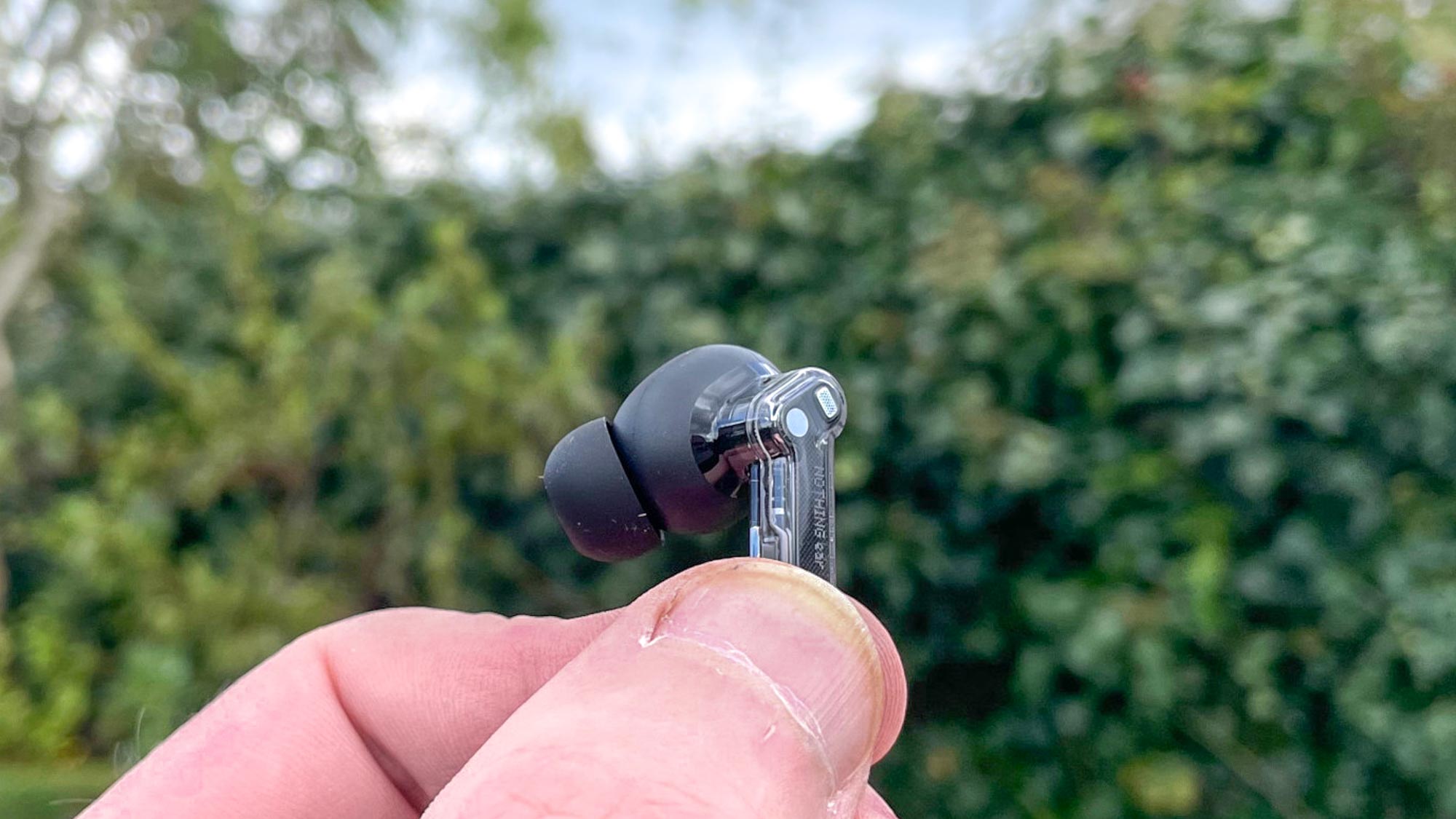
- Attractive see-through styling avail in black and white
- Comfortable to wear but fiddly to fit for some
Nothing's see-through drop stem design is its signature look. I genuinely like the style and the transparent design, and the new Ear wireless buds look identical to the model they replace.
As with the Ear (2), there’s plenty of attention to detail on the new version from the tiny printed lettering on each stem to the clearly visible touch sensors and three microphones in each earpiece.
The earbuds maintain their IP54 rating for the buds, making them protected from dust and resistant to sweat and moisture to the same level as the AirPods Pro 2 USB-C. The charging case dimensions have been modified slightly, and the black version I have for this review has a sophisticated gray tint to the perspex lid. The case is still rated to IP55 for dust and water resistance, and has a pairing button on the side along with a USB-C charging port. There's also a small LED to indicate the earbud's status.
I've tested several new wireless earbuds recently that rank in our best wireless earbuds buying guide, but the Nothing Ear are some of the lightest I've worn. I barely noticed them in my ears. The pre-fitted mid-size eartips worked well for my ears, and the Ear Tip Fit Test confirmed that they were indeed the correct size and made a good seal in my ear canal.
Nothing Ear review: Controls
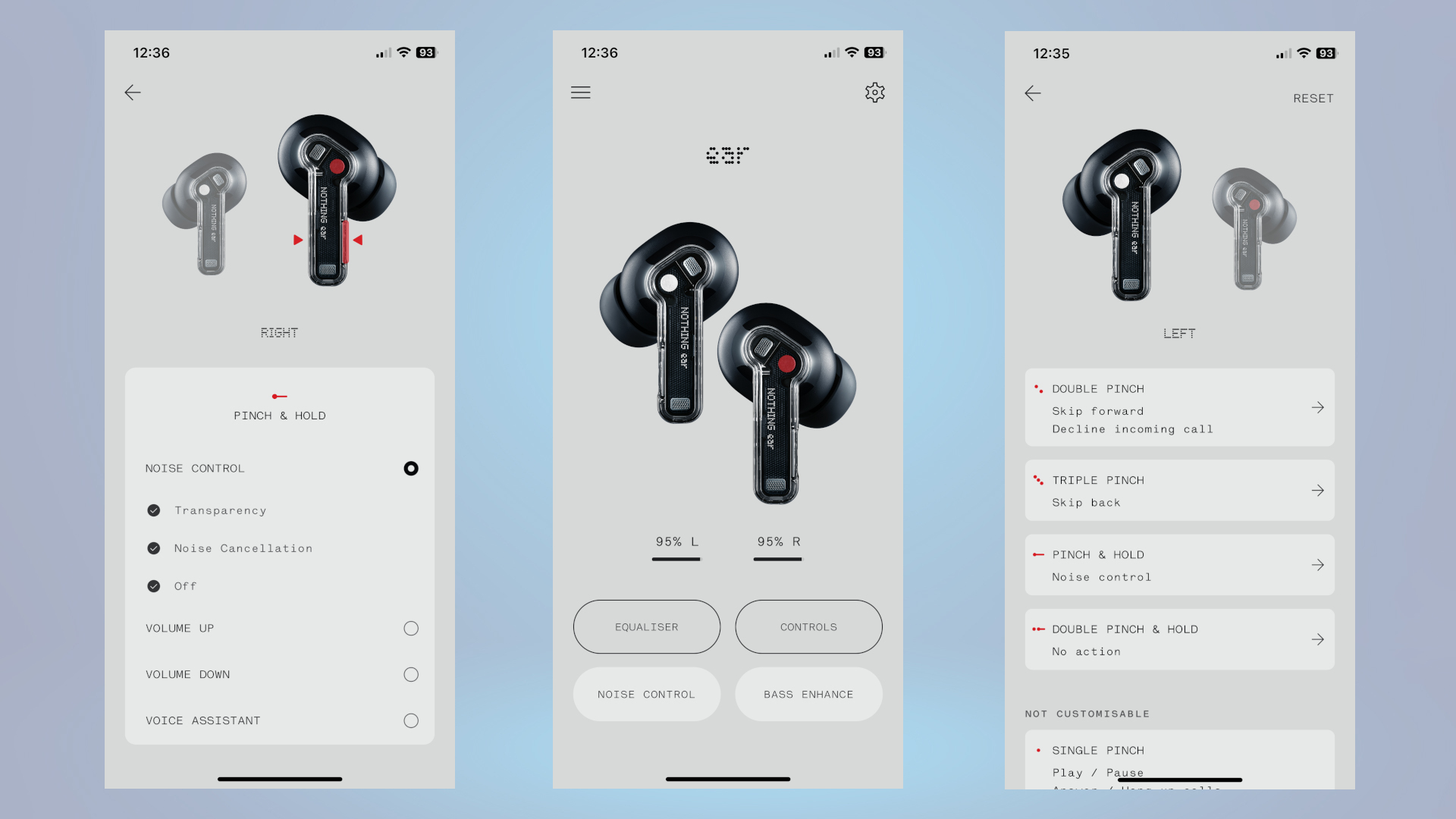
- Reliable pinch controls with useful feedback
- Assignable controls
- Short drop stem may make pinch controls fiddly for some
I love the pinch controls, and fell they're possibly even more responsive than the Ear (2) when it comes to registering gestures. A single pinch input gives play/pause, answer/hang up calls, while a double pinch enables skip forward or decline incoming calls, and a triple pinch for skip back. Pinch and hold on either the left or right earbud will switch between Active Noise Cancelation on or off, and Transparency Mode, while volume adjustment, and manual voice assistant activation on your playback device can be assigned to either earbud via a double pinch and hold gesture.
As with the Ear (2), the amount of tactile feedback I got when skipping back and forth between tracks felt really positive. And I love the breath sound that confirms Transparency mode has been selected.
Nothing Ear review: Sound quality
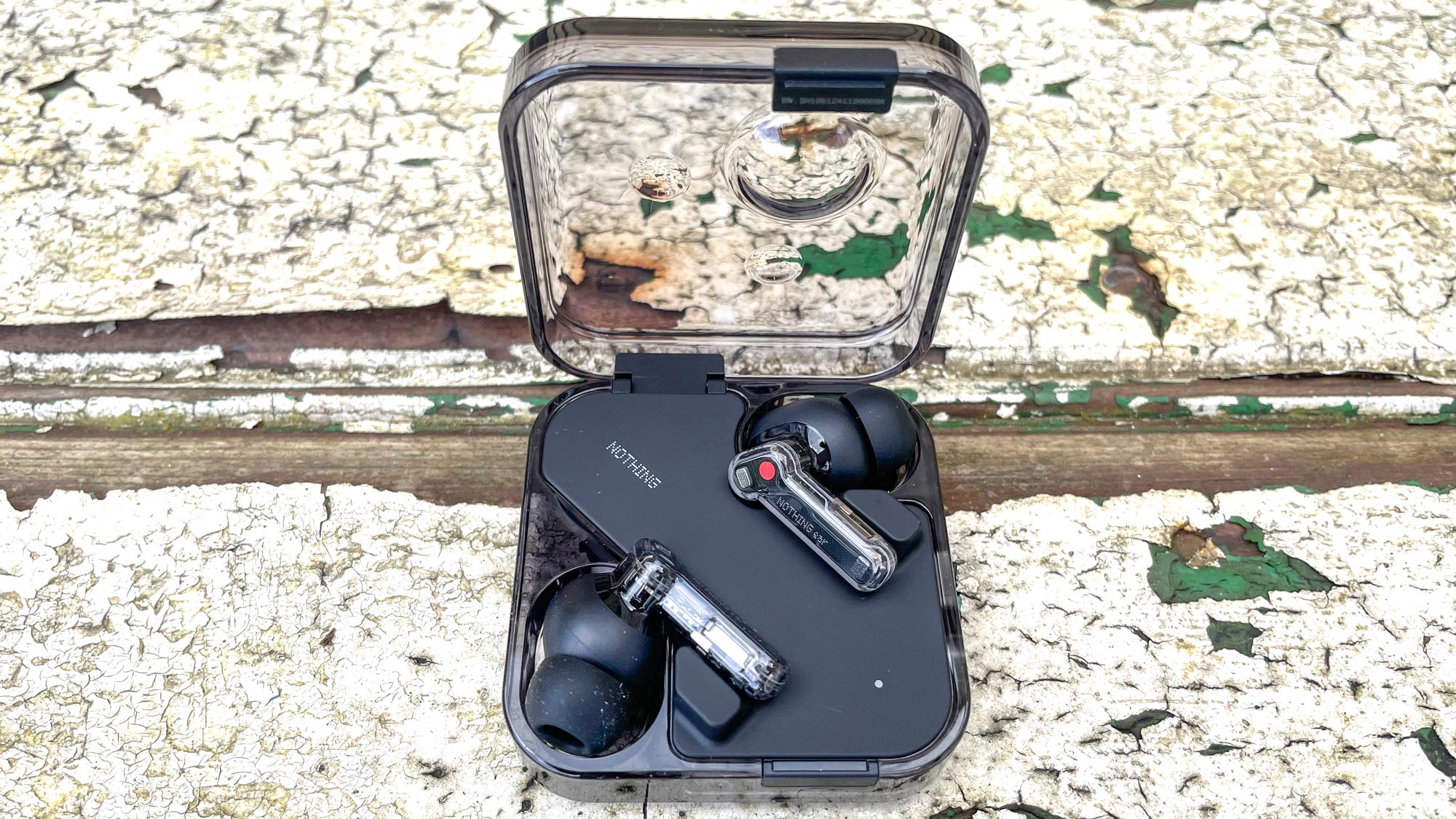
- Impressive sound
- Strong codec support for high-quality sound
- Effective sound personalization mode
Sound quality from the new custom 11mm driver is rewarding across the entire frequency range. I've been testing the buds connected to my Sony Xperia 1 IV smartphone using LDAC over Bluetooth, and the results are impressive. I've also tried them out at the gym in place of my AirPods Pro 2 connected to a iPhone 12 Pro.
Despite the driver being slightly smaller in this new model than the version fitted to their predecessor, there's no sense of any bass frequencies being sacrificed in any way. The new 5-level Bass Enhance and the improved air flow in the buds' acoustic architecture give low notes to tracks in my Tidal playlist all the energy and gravitas they need. The sound is rich and immersive, but I found I didn't need take Bass Enhance beyond level 3.
Just as I found with the Ear 2, the new Ear flagship get off to an impressive start even without any EQ tinkering. Nothing has taken its personalized sound even further though via a suite of features in the excellent Nothing X app designed to tailor the sound to your personal level following a short hearing test. The process takes several minutes to complete, but once done, I was able to activate a frequency map tailored to my hearing. Wearers can select between "Recommended" and "Richer" profiles, and there's an intensity slider which appears to adjust the amount of low frequency energy. Following my short test, I found I preferred the Recommended option with the Intensity slider set to 100%.
In my tests wearing the Nothing Ear wireless buds in different environments connected to different devices, I noticed as subtle difference in the sound signature with ANC on and off. With both Android and iPhone playback, the sound has a more even balance across the entire frequency range. Whereas activating ANC mode appears to boost the bass and low-mid notes a fraction, making the sound richer but also more fatiguing to listen to over longer periods. I also found that selecting LDAC over Bluetooth when connected to my Sony Xperia 1 IV phone gave a noticeable uplift in treble detail, and was my preferred choice. I haven't been able to try the Nothing Ear with a LHDC support.
Nothing Ear review: Active noise cancelation
- Good ANC performance rather than great
- Effective Transparency mode
- ANC alters sound signature slightly
Nothing claims an improvement in ANC performance that's almost twice as effective as its predecessor. The buds feature what's described as a new smart ANC algorithm that checks for noise leakage between the earbuds and the ear canal, and adjusts noise cancelation accordingly. Ear also accounts for background distractions with Adaptive ANC and automatically applies one of 3 noise cancelation levels, high, medium, and low.
In practice, the tech is pretty effective and manages to reduce the overall background level of external sounds, but it doesn't block them out completely. For example, when I wore the Nothing Ear at the gym I could still hear music from the PA system playing, as well as the person on the rowing machine behind me. It's a tough test perhaps, but the Ear's ANC didn't match the level or eternal noise reduction I typically get when wearing the AirPods Pro 2 while working out.
As with the Ear (2), the number of noise control levels runs to High, Mid, Low, and Adaptive. I had the Ear mostly set to High or Adaptive. Transparency mode was effective without inadvertently boosting other sounds, and the buds were untroubled by wind noise on my walks and runs.
Nothing Ear review: Battery life
- 5.2 hours with ANC enabled
- A 10-minute fast charge gives up to 10 hours
Nothing has extended battery life of Ear to 5.2 hours with ANC on, which translates to around 8.5 hours without ANC. That's not quite as strong as some of the best cheap wireless earbuds, but it's a step of over its predecessor at just 4 hours with ANC enabled. The charging case capacity has also been boosted with total playback up to 40.5 hours compared to 36 hours for the Ear (2).
A 10-minute fast charge claims to give up to 10 hours of use.
Nothing Ear review: Verdict
I was surprised that Nothing decided to replace its flagship Ear (2) after just 12 months, but things move quickly in the earbuds sector and makers are updating more frequently with increasingly strong audio tech to stay ahead of the competition.
Despite what feels like a slightly backward step with the name, the Nothing Ear are an improvement over the previous version. The advances are subtle and geared towards higher levels of refinement, but they bring a step up all the same. As an affordable alternative to a pair of AirPods Pro 2, the Nothing Ear wireless earbuds are pretty much everything you could want.







